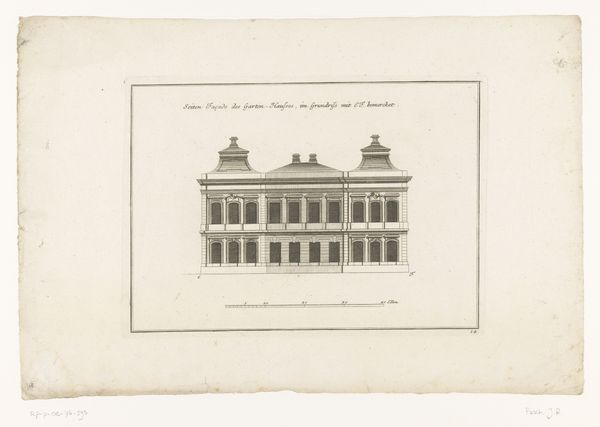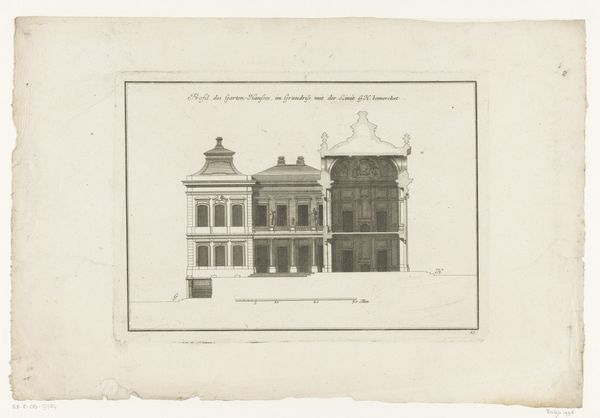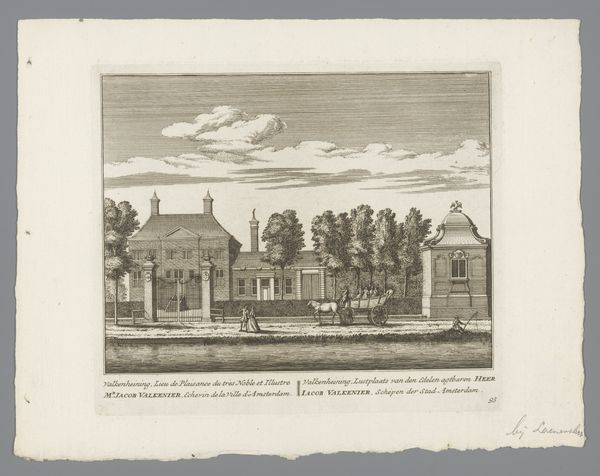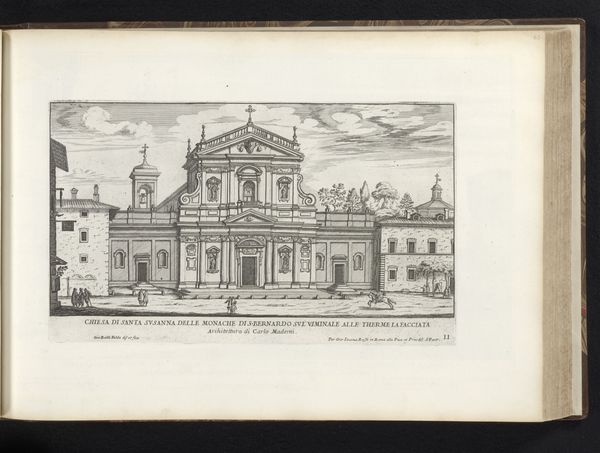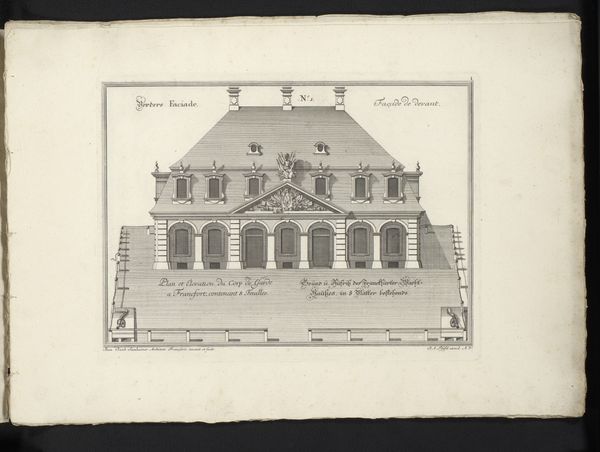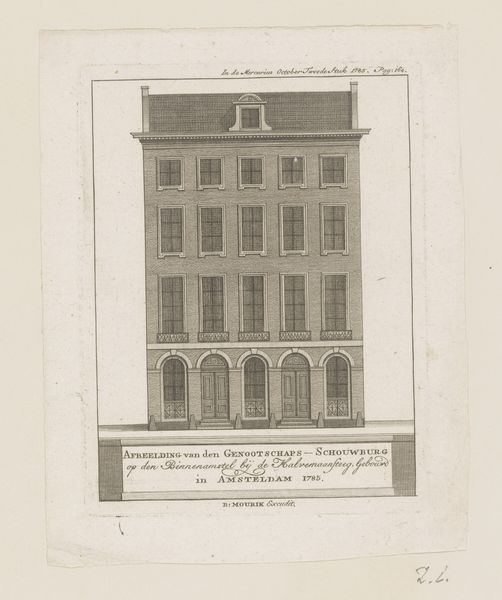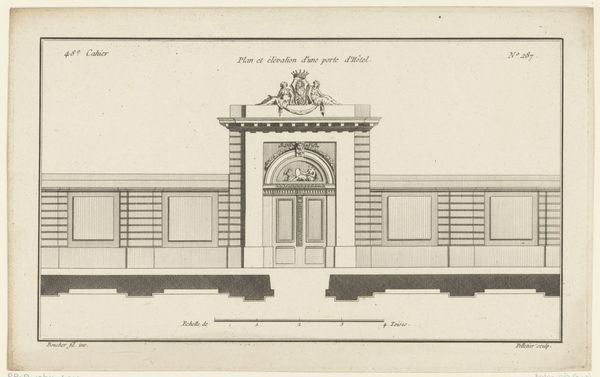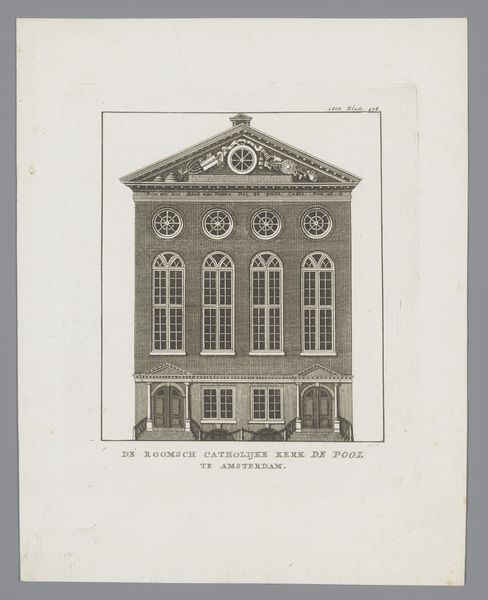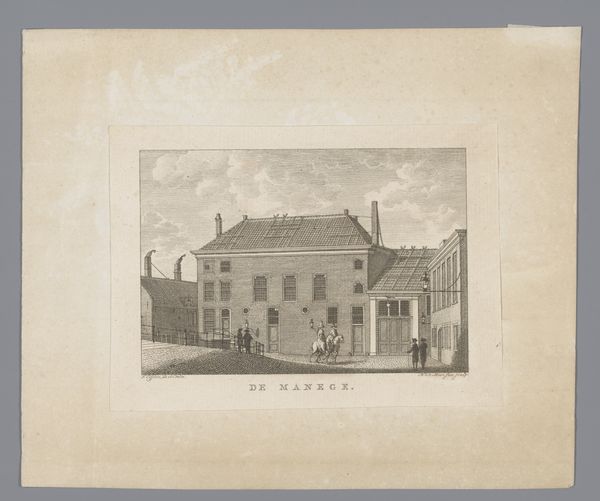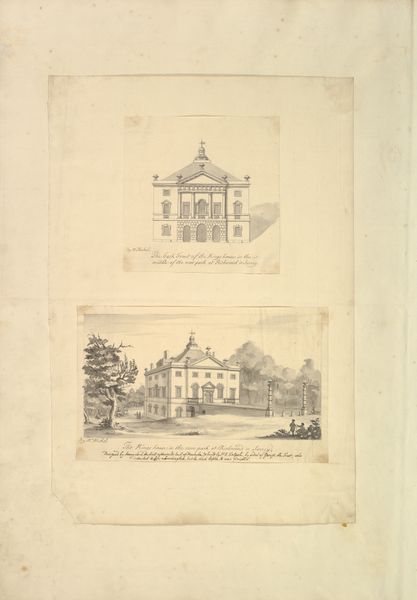
print, engraving, architecture
#
dutch-golden-age
# print
#
perspective
#
geometric
#
line
#
cityscape
#
academic-art
#
engraving
#
architecture
Dimensions: height 179 mm, width 141 mm
Copyright: Rijks Museum: Open Domain
Editor: This print, "View of the Dome at the Toll House in Amsterdam" from 1785, by an anonymous artist, renders a rather curious architectural study using engraving techniques. The overall mood is somewhat sterile, wouldn't you say? It’s almost diagrammatic. What jumps out at you when you see it? Curator: Indeed. It is diagrammatic. I am immediately struck by the deliberate dichotomy the artist has created. Note how the structure is divided; one half is presented in a darker tonality versus the bright façade of the other. Do you suppose that might symbolize a tension or contrast, perhaps reflecting the building's function? Editor: The tension between light and dark makes me wonder if it is hinting at some internal bureaucratic workings? What kind of visual language would citizens at that time associate with customs offices? Curator: Intriguing. Consider the symbolic role of a Toll House. It represents a gateway, a point of exchange, but also of control. The "dome," or Koepel, itself, what does a dome communicate to you? Is it reaching towards something higher, such as knowledge, surveillance, or even power? The rigid lines certainly speak to a sense of order. Editor: That is interesting. A point of exchange under watch… so there’s trade, yes, but also constant control? Also the dome resembles those used in surveillance or even prisons, yes? Curator: Precisely. Perhaps the artist seeks to subtly convey a critical reading of state power through visual cues recognizable to contemporary viewers. Can we view the shadow as secrets? It's compelling how architecture is used as a vessel for potent, if understated, social commentary. Editor: I never considered that! So, even in a seemingly straightforward architectural study, deeper social commentary can reside within carefully chosen symbolic elements. I will definitely pay attention to how these buildings communicate in later artworks as well! Curator: Excellent. And recall how we might impose modern sensibilities upon historical narratives – visual communication is as much about change as about historical stability.
Comments
No comments
Be the first to comment and join the conversation on the ultimate creative platform.
